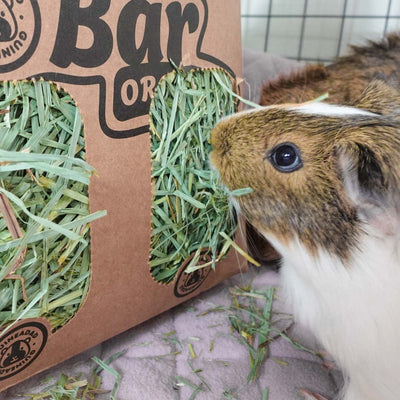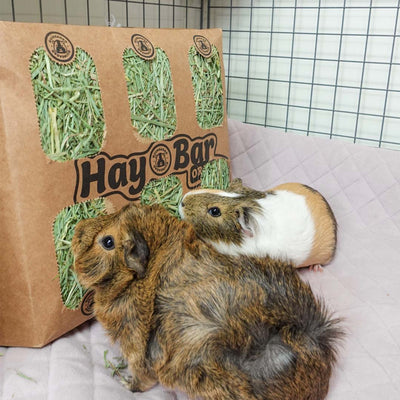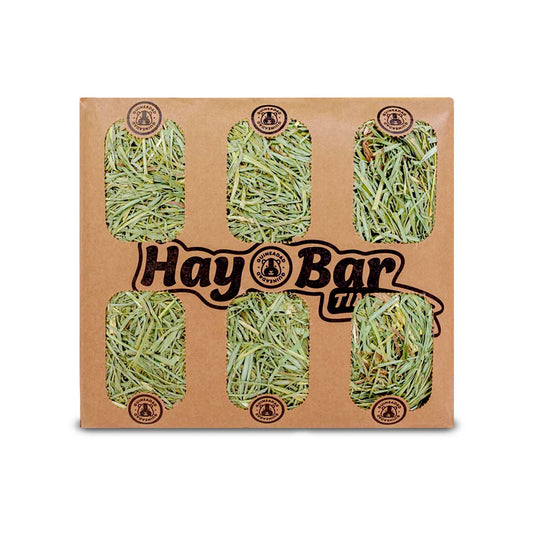To establish a daily and weekly feeding routine for guinea pigs, create a consistent schedule. Offer fresh hay daily and limit pellets to 1/8 cup per guinea pig.
Provide a variety of fresh vegetables daily to ensure a balanced diet. It’s essential to maintain a routine to keep your guinea pigs healthy and happy. Following a structured feeding schedule helps prevent overfeeding and promotes proper digestion. By planning ahead and sticking to a routine, you can ensure your guinea pigs receive the necessary nutrients for their well-being.

Credit: guineadad.com
Contents
- Introduction To Guinea Pig Diets
- Essential Nutrients For Guinea Pigs
- Types Of Guinea Pig Foods
- Fresh Foods In A Guinea Pig’s Diet
- Creating A Daily Feeding Schedule
- The Role Of Water In Your Pet’s Diet
- Weekly Feeding Plan For Optimal Health
- Monitoring Your Guinea Pig’s Health
- Common Feeding Mistakes To Avoid
- Supplements And Treats
- Seasonal Adjustments In Feeding
- Interpreting Your Guinea Pig’s Eating Habits
- Conclusion: Commitment To Dietary Excellence
- Frequently Asked Questions
- Conclusion
Introduction To Guinea Pig Diets
Guinea pigs require a balanced diet consisting of hay, pellets, vegetables, and fresh fruits. Creating a daily and weekly feeding routine is crucial to ensure that your furry friend receives the right amount of nutrients. Varying the types of food and adjusting the quantity based on age and weight will help maintain their health and prevent obesity.
The Importance Of Proper Nutrition
Guinea pigs are herbivores, meaning that their diet consists entirely of plant-based foods. As such, it’s essential to provide them with a nutritionally balanced diet that meets all their needs. Guinea pigs require a high-fiber diet to ensure proper digestion and avoid common health issues such as gastrointestinal stasis. In addition to hay and fresh vegetables, guinea pigs also need a source of vitamin C, as they cannot produce it themselves.What Guinea Pigs Eat In The Wild
In the wild, guinea pigs primarily feed on grasses and a variety of leafy greens. As herbivores, they’ve evolved to extract maximum nutrition from a plant-based diet. While domesticated guinea pigs have access to a wider range of foods, it’s still important to mimic their natural diet as closely as possible. Providing a variety of fresh vegetables such as spinach, kale, and carrots can help ensure that they’re getting all the nutrients they need.Creating a daily and weekly feeding routine is crucial to maintaining your guinea pig’s health. A typical feeding schedule for guinea pigs includes unlimited access to hay, a small portion of fresh vegetables, and a measured amount of pellets. Fresh water should always be available, and any uneaten food should be removed promptly to prevent spoilage.To ensure your guinea pig is getting the right amount of nutrients, consider weighing their food and monitoring their weight regularly. If you notice any changes in their appetite or behavior, consult with a veterinarian to rule out any underlying health issues.In conclusion, providing a nutritionally balanced diet is crucial to maintaining your guinea pig’s health and wellbeing. By mimicking their natural diet and creating a feeding routine, you can help ensure that they’re getting all the nutrients they need to thrive.Essential Nutrients For Guinea Pigs
Guinea pigs are adorable and sociable pets that require a well-balanced diet to stay healthy. Understanding the essential nutrients for guinea pigs is crucial for creating a feeding schedule that meets their dietary needs. By focusing on key elements such as Vitamin C requirements and balancing fiber and protein, you can ensure that your guinea pig maintains optimal health and vitality.
Vitamin C Requirements
Guinea pigs are unable to produce their own vitamin C, making it an essential nutrient in their diet. Fresh vegetables and fruits such as bell peppers, kale, and strawberries are rich sources of vitamin C. Including these in their daily feeding routine is vital to prevent scurvy, a condition resulting from vitamin C deficiency.
Balancing Fiber And Protein
High-quality hay is a primary source of fiber for guinea pigs and should be available to them at all times. Additionally, pellets formulated specifically for guinea pigs provide the necessary balance of fiber and protein. Leafy greens such as romaine lettuce and spinach can also contribute to their fiber and protein intake.
Types Of Guinea Pig Foods
When it comes to feeding your guinea pig, it’s essential to provide a well-rounded diet to ensure their health and happiness. Understanding the types of foods that are best for your guinea pig is the first step in creating a feeding schedule that meets their nutritional needs. Let’s explore the different types of foods that are essential for a balanced guinea pig diet.
Pellets: Pros And Cons
Guinea pig pellets are a convenient way to provide essential nutrients and vitamins to your furry friend. They are specially formulated to meet the dietary needs of guinea pigs, ensuring they receive the right balance of nutrients. However, overfeeding pellets can lead to obesity and other health issues, so it’s crucial to measure out the correct portion for your guinea pig’s size and age.
Hay: Types And Benefits
Hay is a staple in a guinea pig’s diet, providing essential fiber that aids in digestion and helps maintain proper dental health. There are different types of hay, including Timothy hay, orchard grass hay, and alfalfa hay. Timothy hay is the most recommended due to its high fiber content and low calcium levels, making it ideal for adult guinea pigs. It’s important to provide unlimited access to hay to ensure your guinea pig’s digestive system stays healthy.

Credit: guineadad.com
Fresh Foods In A Guinea Pig’s Diet
Fresh foods, such as vegetables and fruits, are an important part of a guinea pig’s diet. When creating a daily and weekly feeding routine, make sure to include a variety of fresh foods to provide your guinea pig with the necessary nutrients and prevent boredom.
Safe Fruits And Vegetables
Guinea pigs have specific dietary needs, and incorporating fresh fruits and vegetables into their feeding routine is essential for their overall health and well-being. These nutritious additions provide essential vitamins and minerals that contribute to a balanced diet. Here are some safe fruits and vegetables that you can include in your guinea pig’s daily or weekly feeding schedule:– Leafy Greens: Leafy greens such as romaine lettuce, spinach, and kale are excellent choices for your furry friend. They are packed with nutrients like vitamin C, which is crucial for guinea pigs as they cannot produce it on their own.– Bell Peppers: Colorful bell peppers, whether red, yellow, or green, are a great source of vitamin C and add variety to your guinea pig’s diet. Remember to remove the seeds and stems before offering them.– Cucumbers: This hydrating vegetable is a favorite among guinea pigs. Cucumbers are low in calories and provide a refreshing crunch. Make sure to wash them thoroughly before serving.– Carrots: Carrots are not only crunchy but also rich in vitamin A, which promotes healthy vision and supports a strong immune system. Offer them in moderation due to their high sugar content.– Apples: Slice up some fresh apple as a treat for your guinea pig. Just remember to remove the seeds and core before serving. Apples are a good source of fiber and provide a sweet and juicy snack.Foods To Avoid
While it’s important to provide a varied diet for your guinea pig, there are some foods that should be avoided as they can be harmful to their health. Here are a few foods to steer clear of when creating your guinea pig’s feeding schedule:– Citrus Fruits: Citrus fruits like oranges, lemons, and grapefruits are too acidic for guinea pigs and can cause digestive issues. It’s best to avoid these fruits altogether.– Potatoes: Raw potatoes, as well as potato peels and leaves, contain solanine, a toxic substance that can be harmful to guinea pigs. Keep potatoes off their menu to ensure their safety.– Onions: Onions, whether raw, cooked, or in powdered form, are toxic to guinea pigs and can cause severe damage to their red blood cells. Avoid feeding them onions to prevent any health complications.– Iceberg Lettuce: While leafy greens are generally good for guinea pigs, iceberg lettuce should be avoided. It has a high water content and lacks the necessary nutrients that other greens provide.– Chocolate and Sweets: Chocolate and sweets should never be given to guinea pigs. These sugary treats can lead to obesity, dental issues, and digestive problems. Stick to their natural diet for optimal health.By incorporating safe fruits and vegetables into your guinea pig’s feeding schedule and avoiding harmful foods, you can ensure they receive a well-rounded and nutritious diet. Remember to introduce new foods gradually and monitor your guinea pig’s reaction to any changes in their diet. Your furry friend will appreciate the variety and benefit from the added nutrients in their daily or weekly routine.Creating A Daily Feeding Schedule
Establishing a consistent daily feeding routine is crucial for the well-being of your guinea pigs. By creating a structured schedule, you can ensure that your pets receive the necessary nutrients at the right times, promoting their health and happiness.
Timings For Feeding
Guinea pigs should be fed twice a day, with their primary meal in the morning and a smaller portion in the evening. The morning feeding, ideally between 7:00 AM and 8:00 AM, should consist of fresh hay, a small amount of pellets, and a variety of fresh vegetables. In the evening, from 6:00 PM to 7:00 PM, offer a small serving of hay and a few additional vegetables to supplement their diet.
Monitoring Food Intake
It’s essential to monitor your guinea pigs’ food intake to ensure they are consuming an appropriate amount and to identify any changes in their eating habits. Keep an eye on the quantity of hay and pellets they consume daily, and observe their behavior during feeding times to detect any signs of decreased appetite or unusual eating patterns.
The Role Of Water In Your Pet’s Diet
Water plays a crucial role in your pet’s diet, including guinea pigs. Creating a daily and weekly feeding routine ensures that your furry friend stays hydrated and receives the necessary nutrients for optimal health.
Ensuring Constant Water Availability
Water is essential for guinea pigs to maintain hydration and overall health.Offer fresh water in a bottle with a sipper tube to prevent contamination.Regularly check the water level to ensure your guinea pig has access throughout the day.How To Keep Water Clean And Fresh
Clean the water bottle and sipper tube weekly to prevent algae growth.Use a mild soap and a bottle brush to scrub the container thoroughly.Rinse the bottle and tube thoroughly to remove any soap residue.Replace water daily and monitor for any signs of contamination.Weekly Feeding Plan For Optimal Health
Crafting a weekly feeding plan for optimal health is crucial for guinea pigs. By establishing a structured feeding schedule that includes fresh hay, pellets, and veggies, you can ensure your furry friends receive the necessary nutrients for their well-being. Consistency in their daily and weekly feeding routine is key to promoting their overall health.
Creating a balanced weekly feeding plan is crucial for guinea pigs’ well-being. Here’s a simple guide for a healthy diet:Sample Menu For A Guinea Pig
A balanced diet consists of 80% hay, 15% fresh vegetables, and 5% pellets.– Monday: Morning – 1 cup of fresh veggies, Evening – 1/8 cup of pellets. – Tuesday: Morning – 1 cup of fresh veggies, Evening – 1/8 cup of pellets. – Wednesday: Morning – 1 cup of fresh veggies, Evening – 1/8 cup of pellets. – Thursday: Morning – 1 cup of fresh veggies, Evening – 1/8 cup of pellets. – Friday: Morning – 1 cup of fresh veggies, Evening – 1/8 cup of pellets. – Saturday: Morning – 1 cup of fresh veggies, Evening – 1/8 cup of pellets. – Sunday: Morning – 1 cup of fresh veggies, Evening – 1/8 cup of pellets.Adjustments For Age And Health
– Young guinea pigs need more pellets for growth. – Senior guinea pigs may require softer vegetables. – Ill guinea pigs might need extra vitamin C.Remember, always consult a vet for personalized feeding plans.
Credit: guineadad.com
Monitoring Your Guinea Pig’s Health
Establishing a structured daily and weekly feeding routine is crucial for monitoring your guinea pig’s health. Consistency in feeding schedules ensures balanced nutrition and helps prevent dietary issues. By creating a reliable feeding plan, you can promote your guinea pig’s well-being and overall health.
Signs Of Nutritional Deficiencies
Guinea pigs can show signs of nutritional deficiencies through behavioral changes and physical symptoms.When To Consult A Vet
Consult a vet if you notice persistent issues or unexplained changes in your guinea pig’s health.Monitoring Your Guinea Pig’s Health Keep an eye on your guinea pig’s health by observing their behavior, checking their weight regularly, and monitoring their food and water intake.Signs of Nutritional Deficiencies – Weight loss – Dull coat – LethargyWhen to Consult a Vet 1. Persistent symptoms 2. Unexplained changesRegular health monitoring helps in early detection of issues.Common Feeding Mistakes To Avoid
Creating a daily and weekly feeding routine for guinea pigs is essential to avoid common feeding mistakes. By following a schedule, you can ensure that your furry friends receive the right amount of food at the right time, promoting their health and well-being.
Overfeeding And Obesity
Guinea pigs are prone to obesity, leading to health issues.Ignoring Dietary Variety
Lack of dietary variety can cause nutritional deficiencies in guinea pigs.Common Feeding Mistakes to Avoid: – Overfeeding can lead to obesity and health problems. – Ignoring dietary variety can result in nutritional deficiencies. – Feeding too many treats can unbalance their diet. – Using incorrect portion sizes may cause weight issues. – Neglecting fresh vegetables can lead to vitamin deficiencies. – Forgetting hay in their diet can impact digestion. – Inconsistency in feeding times can disrupt their routine. – Not providing clean water daily can lead to dehydration. – Feeding old or moldy food can cause health problems.| Common Mistakes | Consequences |
|---|---|
| Overfeeding | Obesity and health issues |
| Ignoring dietary variety | Nutritional deficiencies |
| Feeding too many treats | Unbalanced diet |
| Using incorrect portion sizes | Weight problems |
| Neglecting fresh vegetables | Vitamin deficiencies |
| Forgetting hay in their diet | Impact on digestion |
| Inconsistency in feeding times | Disrupt routine |
| Not providing clean water daily | Dehydration risks |
| Feeding old or moldy food | Health problems |
Supplements And Treats
When it comes to the feeding schedules for guinea pigs, it’s important to pay attention to their supplements and treats. Creating a healthy and balanced diet for your guinea pig involves understanding when supplements are necessary and choosing healthy treats. Let’s explore these aspects in more detail.
When Supplements Are Necessary
Supplements become necessary for guinea pigs when they are not receiving adequate nutrients from their regular diet. This can occur when they are not eating enough hay or if their diet lacks variety. Supplements such as vitamin C may be required, especially if your guinea pig is not getting enough from its food.
Choosing Healthy Treats
It’s important to choose healthy treats for your guinea pig to maintain their overall well-being. Look for treats that are high in fiber and low in sugar to prevent health issues. Fresh vegetables such as bell peppers, carrots, and cucumbers can make excellent treats. Always introduce new treats gradually to ensure your guinea pig’s digestive system adjusts well.
Seasonal Adjustments In Feeding
To ensure the health of your guinea pig, it is important to create a consistent feeding routine. This includes establishing both daily and weekly feeding schedules. It is also important to make seasonal adjustments in feeding to account for changes in temperature and activity levels.
Guinea pigs, like many other animals, have different dietary needs depending on the season. As the weather changes, it’s important to make adjustments to their feeding schedule to ensure their health and well-being. In this section, we will explore the specific dietary changes that need to be made during summer and winter months.Summer Diet Changes
During the hot summer months, guinea pigs may require some modifications to their diet to help them stay cool and hydrated. Here are some key considerations to keep in mind:1. Increase water intake: Make sure your guinea pigs have access to fresh, clean water at all times. Consider adding an additional water bottle or dish to their enclosure to encourage them to drink more.2. Increase fresh vegetables: Include more water-rich vegetables in their daily meals, such as cucumber, lettuce, and bell peppers. These will not only provide hydration but also add essential vitamins and minerals to their diet.3. Provide cooling treats: Offer frozen fruits like watermelon or small ice cubes made from unsweetened fruit juice as a refreshing treat. This can help keep them cool and provide some relief from the heat.4. Adjust feeding times: Since guinea pigs are more active in the early morning and evening when it’s cooler, consider adjusting their feeding schedule accordingly. Feed them during these times to ensure they have ample time to eat before the temperature rises.Winter Care And Feeding
In colder winter months, guinea pigs require extra care to keep them warm and healthy. Here are some important considerations for their winter diet:1. Increase hay intake: Hay is a crucial part of a guinea pig’s diet, but during winter, it becomes even more important. Provide unlimited amounts of fresh hay to help keep them warm and aid in digestion.2. Limit watery vegetables: While it’s still important to include vegetables in their diet, reduce the amount of watery vegetables such as cucumber, as they may cause the guinea pigs to feel colder. Instead, focus on providing more leafy greens and root vegetables.3. Ensure a warm environment: Guinea pigs are sensitive to cold temperatures, so make sure their enclosure is in a warm area of your home. Avoid placing their cage near drafts or cold windows. You can also add extra bedding or blankets to provide insulation.4. Monitor weight: During winter, guinea pigs tend to be less active, which can lead to weight gain. Keep an eye on their weight and adjust their portion sizes if necessary, ensuring they maintain a healthy body condition.By making these seasonal adjustments to your guinea pig’s feeding routine, you can help them stay happy and healthy throughout the year. Remember to always consult with a veterinarian for personalized advice based on your guinea pig’s specific needs.Interpreting Your Guinea Pig’s Eating Habits
Normal Vs. Abnormal Behavior
Guinea pigs have consistent eating habits that can help you understand their overall health. Normal behavior includes frequent nibbling and drinking throughout the day. Abnormal behavior, such as sudden loss of appetite or excessive water consumption, can indicate underlying health issues.
What Changes In Appetite Indicate
Changes in your guinea pig’s appetite can signal various health concerns. Decreased appetite may indicate dental problems or digestive issues, while increased appetite can be a sign of diabetes or nutritional deficiencies.
Conclusion: Commitment To Dietary Excellence
Creating a daily and weekly feeding routine for guinea pigs requires commitment to dietary excellence. This involves providing a balanced diet, following feeding schedules, and monitoring their health regularly. By doing so, you can ensure your furry friend stays healthy and happy.
The Benefits Of A Well-managed Diet
Ensuring a well-managed diet for your guinea pig yields numerous benefits. A balanced diet promotes overall health, preventing obesity and related health issues. Proper nutrition also supports a strong immune system, reducing the risk of illnesses. Additionally, it contributes to healthy digestion and ensures your guinea pig maintains a lustrous coat and clear eyes. By adhering to a consistent feeding schedule, you can provide your pet with the optimal nutrition it needs to thrive.
Continual Learning And Adaptation
As a responsible guinea pig owner, it’s crucial to continually learn and adapt to their dietary needs. Observing your pet’s eating habits and monitoring its weight can help you make necessary adjustments to its feeding schedule. Stay informed about nutritional requirements and be open to modifying the diet as needed. By staying attentive and receptive to change, you can ensure that your guinea pig receives the best possible care.
Frequently Asked Questions
What Is The Ideal Feeding Schedule For Guinea Pigs?
The ideal feeding schedule for guinea pigs includes unlimited access to hay, fresh vegetables twice a day, and a limited amount of pellets. It is also important to ensure that guinea pigs have access to fresh water at all times.
How Much Hay Should I Feed My Guinea Pig Daily?
Guinea pigs should have unlimited access to hay, which should make up the majority of their diet. They should consume about one cup of hay per day, per guinea pig.
What Type Of Vegetables Should I Feed My Guinea Pig?
Guinea pigs should be fed a variety of fresh vegetables daily, including dark leafy greens, bell peppers, and carrots. It is important to avoid feeding them certain vegetables, such as iceberg lettuce, which can cause digestive issues.
How Often Should I Give My Guinea Pig Pellets?
Guinea pigs should be given a limited amount of pellets daily, typically about 1/8 cup per day, per guinea pig. It is important to avoid overfeeding pellets, as they can lead to obesity and other health issues.
Conclusion
Establishing a feeding schedule for your guinea pigs is crucial for their overall health and well-being. By creating a daily and weekly routine, you can ensure that they receive a balanced diet and maintain a healthy weight. Remember to provide a variety of fresh vegetables, high-quality pellets, and hay, while also monitoring their water intake.
With a consistent feeding schedule, you can promote optimal nutrition and happiness for your furry friends.



